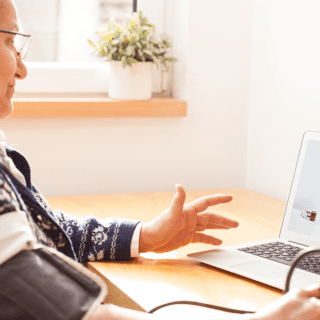
The relationship between a physician and a patient is one of the most important aspects of healthcare. A strong physician-patient relationship is built on trust and communication. Patients must trust that their physician will provide them with high-quality care, keep their information confidential, and make decisions in their best interest.
Clear and effective communication between physician and patient is essential for good healthcare treatment. This includes listening to patient’s concerns, providing clear explanations, and involving patients in decisions about their care. The physician should take time to understand the patient’s concerns, answer their questions and provide comprehensive care.
Remote Patient Monitoring (RPM) tool is essential to build strong communication between physician-patient and can lead to better patient outcomes, increased patient satisfaction, and improved healthcare.
Whether you are a solo practitioner, a doctor group, or a hospital system, remote patient monitoring (RPM) is likely to impact your practice significantly.
RPM (remote patient monitoring) is a technology that allows healthcare providers to assess a patient’s health remotely. RPM can benefit independent practices by reducing workload and allowing more time to care for patients.
Reducing Workload: By remotely monitoring patients, doctors can better manage their workload, allowing them to spend more time with each patient.
Providing More Time For Patient Care: By reducing the need to visit patients in person, RPM allows doctors to provide more personalized care. This can improve patient satisfaction and reduce the risk of medical errors.
For independent practitioners, remote patient monitoring (RPM) offers many benefits, including the ability to see and potentially intervene in the health of patients who are not in their offices.
Remote patient monitoring (RPM) has been shown to promote improved care for uninsured, rural, and minority patients. RPM allows physicians to monitor patients who cannot be physically present in the clinic setting more effectively. This technology also improves communication between clinicians and patients, leading to better patient outcomes.
RPM can improve patient quality of life by providing peace of mind for patients and families and enhanced communication between healthcare providers and patients.
Patients who use RPM often find it less anxiety provoking than traditional doctor visits because they no longer have to wait in silence for long periods or crane their necks to see their doctor.
RPM provides enhanced safety for patients and healthcare professionals by monitoring vital signs remotely; practitioners can ensure the patient’s safety and avoid potential complications.
RPM app allows physicians to extend their reach beyond the office and provide enhanced care management for patients, particularly those with chronic conditions or recently discharged from the hospital. With the ability to track vital health metrics, providers can use this information to tailor care to each patient’s specific needs and intervene if necessary. This can improve overall patient outcomes and quality of life.
RPM can also lead to cost savings by reducing the need for unnecessary hospitalizations, readmissions, and emergency department visits. This is achieved by fostering better communication between patients and healthcare providers. With RPM, symptoms can be diagnosed and addressed remotely, avoiding the need for a hospital visit that would have incurred higher costs.
RPM enables healthcare providers to work closely with patients to improve their health, building a stronger relationship between patients and providers. It also encourages patients to take a more active role in their healthcare and empowers them with access to their own health data, allowing them to understand the effects of their treatment and make informed decisions. This increased patient engagement is linked to better health outcomes.
Remote Patient Monitoring (RPM) has been increasing in recent years. According to a survey by The Center for Connected Health Policy, the usage of RPM increased by 10% between 2018 and 2019. Among the states that reported data, the usage of RPM was highest in Hawaii (41%) and lowest in West Virginia (5%).
A survey conducted by the American Telemedicine Association (ATA) in 2020 found that 75% of healthcare providers in the United States use remote monitoring technology. That number is expected to continue to grow in the coming years.
RPM offers physicians the chance to work more closely with patients to improve their health. It also helps building a stronger relationship between patients and providers and encouraging patients to take a more active role in their healthcare.
Health Wealth Safe partners with physicians to provide top-notch healthcare in the convenience of one’s home through its Remote Patient Monitoring app (RPM). Our enterprise platform, Health Wealth Safe, collects data from all patient demographics, enabling healthcare offices and physicians to customize remote medical services, care management, and personal assessments for each patient if you’re looking for a way to manage your chronic condition and improve your overall health, consider Remote Patient Monitoring (RPM) with Health Wealth Safe.
Don’t wait; take the first step towards better health download the Health Wealth Safe RPM app today!
Become a Partner
Support
Portals